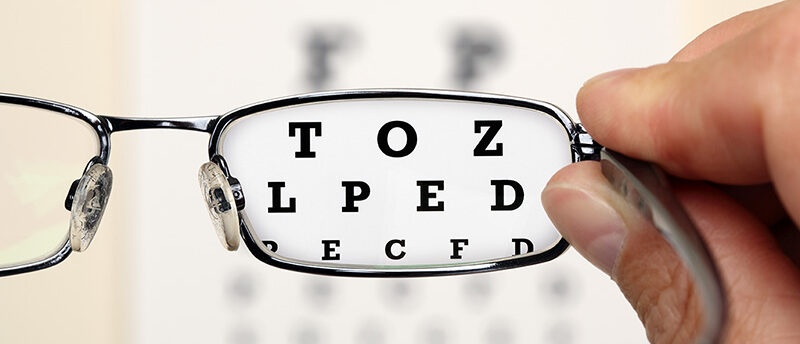
18 Mar No-Line Bifocals for Dummies
No-Line Bifocals for Dummies
Getting used to new glasses isn’t always easy. Here’s how to make your new no-line, progressive bifocals work for you.
When we enter our 40’s or 50’s, our bodies change. Yes, that means you too. One of those changes is often our eyes. It gets harder and harder to see things up close clearly.
Presbyopia. That’s what the text books call it. In a nutshell, your eyes simply refuse to focus like they used to when you were younger. It’s like a camera lens that moves a little more slowly and the subject is out of focus. But thankfully, we have a solution! Progressive, no-line bifocals will solve the problem. Using them you can see distance, intermediate and close-up clearly.
All progressive lenses are designed essentially the same way. To view the distance you look through the top portion of the lens, to see the intermediate you look through the center and for reading, through the bottom. Progressive lenses were actually invented way back in 1959, but didn’t really come into fashion until the late 1970’s. Before that people wore lined-bifocals. You know, the kind that grandma had.
They were the kind of glasses that had that hard, noticeable line across the surface of the lens. This allowed for clearer far and up-close vision and easily added 10 to 15 years to the wearer. The progressive is a bit of a misnomer, a true bifocal would have two focal lengths, but a progressive has three. So, in essence, it’s a tri-focal offering three focal lengths.
So, now that you know a little about bifocals—how do we get these new progressive no-line bifocals to work for you? The first thing you want to do is remember that this is a machine. How can you make it work?
The key is to remember what function you want. Are you trying to see clearly far, near or intermediate? Far would be for activities like looking across a room, walking or driving. Near would be for reading. Reading means distances within your arms-length. Using your cell phone, reading a newspaper (if you can find one!), a paperback novel, your iPad, etc. Intermediate would be for things that are beyond your arms-length. These would include your computer screen, speedometer, GPS, etc.
All progressives are designed pretty much the same way. They kind of look like an hour glass. The Distance is on the top, the Intermediate in the narrow portion in the middle and the Reading on the wider portion on the bottom. The area outside the hour glass has no prescription. That’s the tough thing to get used to.
The top 5 things to remember when using progressives:
- Do NOT move your eyes or head side to side rapidly. You might get dizzy!
- Gently move your eyes up and down through the center channel until you find clarity.
- Use the top, middle or bottom of the lens for distance, intermediate or reading in that order.
- Always think about what function you want. Distance, intermediate or reading, then look for the sweet spot in the lens that’s clear.
- Tipping your chin down a little will automatically place your eyes in the top or distance focal length. Tipping up a little places your eyes in the intermediate and a little more will put them in the reading area
It is not uncommon for it to take a little time to get used to them. Glasses aren’t magic, sometimes a little adjustment is necessary. It’s like you’ve just received a new medication and your body needs to get used to it. Also, remember, the larger and more complex the prescription, the more adjustment might be needed.
A good idea is to start with your new progressives at home in the morning when you wake up with fresh eyes. Practice using them in a familiar environment. This is not the time to jump behind the wheel and get into traffic or enter a dance contest! Take your time, try them out. If you have stairs in your home, use the handrail for a while until you accommodate to your new glasses. Remember, you should be looking through the top portion, the distance, when you’re traversing stairs. Just looking down with your eyes like you might have done before, puts your eyes in the reading area and just might land you on your keister. Nobody wants that!
But think of it—you’ll be able to walk, drive and read a menu at your favorite restaurant again. All with one pair of glasses! It’s like Neapolitan ice cream, you get all three flavors (Distance, Intermediate and Reading) in one container! While progressives are not the cheapest lenses, you can essentially get three pairs of glasses and only buy one frame! Looking at it that way—it’s hard to pass up! Once you adjust to your new lenses, you’ll be able to handle most any task with just one pair of glasses.

Sorry, the comment form is closed at this time.